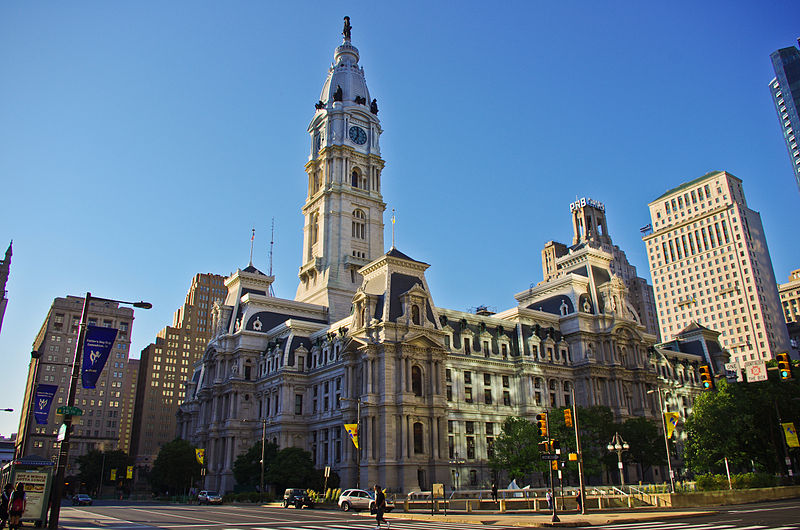A Sense of Rootedness: Reflections on History and Preservation
In his 2015 encyclical Laudato Si, Pope Francis commented upon the “need to protect those common areas, visual landmarks, and urban landscapes which increase our sense of belonging, of rootedness, of “feeling at home” within a city.” By preserving such spaces and visiting them, we as individuals and as a people might feel a connection with the past and view ourselves as belonging to the larger story of humanity. Such spaces remind us that we exist beyond our individual selves.
Two weekends ago, I attended a memorial ceremony for an elderly relative outside of Philadelphia. After the service, I spent an afternoon with my parents and my sisters in the City of Brotherly Love. As we walked through the courtyard of the Second Empire Philadelphia City Hall, I told them about the former gentleman’s agreement that no building could surpass the statue of William Penn perched atop its clock tower. Real estate developers honored this tradition until the 1980s. Later, my father asked about another Second Empire masterpiece, the Union League of Philadelphia, wondering what the building housed and represented.

Philadelphia City Hall. Note the William Penn statue by Alexander Milne Calder atop the tower (Courtesy of Wikimedia Commons).
Our afternoon stroll in Philadelphia left me with the sense of rootedness touched upon in Pope Francis’s letter. While studying the ornate architectural flourishes of Philadelphia City Hall or looking upon the statue of a soldier in front of the Union League, I knew that I played a role–if only a very minor one–in the history of the place.
Preservation of public buildings, parks, homes, and other structures helps build an armature of history for a place and its people. What is worthy of preservation? That depends upon the locality. It might be the cottage of a poet or a cabin built for slaves. It might be a tavern or a playground. By watching a film in a restored movie theater, enjoying a picnic in a painstakingly designed park, or touring a historic home, an individual experiences something soothing and nourishing: one participates in a living past. One becomes rooted to a very specific place. One belongs.
Personally, I feel anxious and unmoored when lacking this connection. This explains why my wife and I live on a tree-lined street largely of century-old homes and why we plan day trips to eighteenth-century cemeteries or Gilded Age estates. For our vacations, we find architecture tours, art museums, and picturesque main streets far more enjoyable and relaxing than sitting in beach chairs sipping cocktails. We like the past. We like old things.
To experience and share in this “rootedness,” one doesn’t need to travel to Vatican City or even Philadelphia. Visit a historic site or a museum near your home. Even more simply, find a statue commemorating an event in your local park or admire a beautiful old house in your neighborhood. Now, imagine who might have strolled along the same path and paused at the same site long before you. Very soon, you’ll find yourself touching the past.